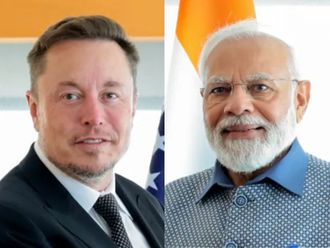With its high disposable incomes, heavy tourist inflows and a world-class retail infrastructure, the UAE, and more specifically Dubai, has become one of the most exciting destinations for luxury brands.
As per some estimates, Dubai alone houses over 400 luxury stores and the luxury retail segment is growing at 12 per cent as compared to the global average of 7 per cent. So in a market that is already getting crowded, how do luxury brands set themselves apart?
What facets of luxury do these brands need to communicate in the retail environment? And are connotations of luxury evolving in the Arab world?
In terms of basic functionality, a luxury brand does not usually offer anything very different from a mainstream brand — the basic function of a car is transportation, whether it is a Toyota or a Ferrari.
However, the allure of luxury brands lies in the emotions that they evoke — which are in turn driven by their superior craftsmanship, performance and/or the exclusivity that they bestow on the owner. Hence, these are facets that need to be evident in the retail environment for luxury brands.
A few pointers towards retailing of luxury brands:
Narrate a compelling story: Most luxury brands have a unique history … for example, Omega’s association with the Nasa space programme or Mercedes-Benz’s heritage of being the first automobile brand in the world. It is important that elements of that history are incorporated into the retail environment so as to create an emotional connect between the buyer and the brand.
Stay true to the brand in all elements of retail design: In most cases, a lot of attention is paid to the visual element of store design. However, it is also important to keep other senses such as sound, smell and touch in mind. Retail environment for a luxury brand needs to connote the brand essence, via all these senses, not only visually.
For instance a brand for luxury accessories needs to keep the textures of the furniture used in-store in mind, so that the brand essence is also communicated via the sense of touch. Similarly, the deep growl of a Maserati or Ferrari engine is an integral part of the brand’s allure, and this needs to be incorporated into retail design.
Create a sense of exclusivity: Luxury brands have an aura of exclusivity around them, as they can only be afforded by the discerning few. This exclusivity also needs to be part of the retail concept — a luxury store should feel like an exclusive connoisseur’s club, so that the buyer feels that he or she has entered a rarefied atmosphere.
This feeling can also be heightened by having members-only events for buyers of the brand, with entry being strictly on invitation. This also has implications on the number of stores — unlike mainstream labels, luxury brands could actually benefit by following a “less is more” approach.
Build brand advocates rather than customers: There is no better marketer of a luxury brand than a person who has already bought/experienced it. People who can afford to buy luxury brands would usually move in similar social circles and converting them into advocates of the brand is a must. Hence, the service provided to them at sales and after-sales is a critical element of the retail strategy.
It’s not only about bling: While the Middle East is known for its opulence, consumer tastes are subtly changing, with simpler, more elegant designs and matt finishes being seen as manifestations of luxury. Luxury retailers need to be cognisant of this evolving trend, which could become mainstream in a few years.
The GCC luxury retail market is estimated at $10 billion (Dh36.7 billion) annually, and with Dubai, Abu Dhabi and Doha being the hottest destinations for new stores, it does seem that the sector is in for some good times. Having a strong retail execution to the brand’s inherent promise would only help to make it a more compelling offer.
The writer is the CEO of AMRB, a Dubai-based research consultancy.












